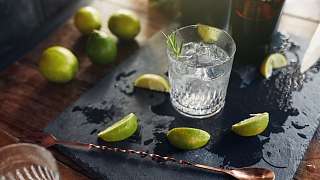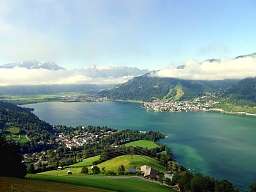Romantik Blog
What makes Gin so unique?
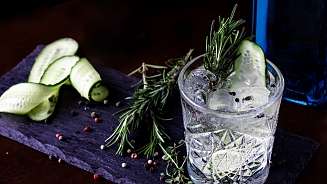
Gin is usually distilled on a juniper basis, but you add something else ...
That's right. We make our gin with the sap of the Swiss stone pine cone. The stone pine is a type of pine that grows mainly here in our region between Styria and Carinthia. We harvest the cones by hand at the beginning of June. This is time-consuming, as they only grow at the very top of the tree. Then the cones are peeled, the juice is pressed out and left in the gin for six weeks. The result is a purely regional, handmade product of high quality.
Sounds like an interesting combination - and how does it taste?
The pine aroma harmonises very well with the juniper note of the gin. Both have a slight bitter note. That's why we also add some elderberry, which provides a balancing sweetness. We usually sell this special gin as a mixed drink with tonic, or as we call it: a "Zin-Tonic". By the way, the resins and oils contained in Swiss stone pine also have an antibacterial effect and lower the heart rate. That's practically something like wellness from within.
Where do you think the continuing gin boom comes from?
Gin is a high-quality spirit that can also be combined well. On the one hand, of course, as a classic mixed drink of 4 cl gin and 8 cl tonic water. Or as a "Dry Martini" made from vodka and gin.
...the way James Bond drinks it?
(laughs) Exactly: shaken, not stirred! But there are many other ways to enjoy gin. In the past, you simply added a slice of lemon and that was it. Today, gin drinks are sometimes decorated with cranberries, rose petals or even cucumber and pepper. We also offer a smoked gin, for example. Smoke is blown into the glass and then covered. This beguiles the nose when drinking and creates a very special taste and smell experience.
Basically, how can you recognise a good gin?
That depends on your individual taste. Some gins have a stronger, some a slightly weaker juniper note, but both can be excellent gins. Generally speaking, a good gin will not give you a headache or hangover the next morning. But it should always be drunk ice-cold, whether neat or as a mixed drink.
What is the price range of an expensive top gin?
Unlike rum or whiskey, there are very few really expensive types of gin. This is because very high-quality rum or whiskey becomes so expensive due to the long storage period. This factor does not apply to gin. Here, the quality results from the distillation and the basic products used. Our most expensive gin has a purchase price of 55 euros per bottle.
Can you tell us your personal favourite gin?
You mean apart from our "Zin Tonic" (laughs). A Monkey 47 from the Black Forest, that's really a super product.
Gin knowledge
Origin
Gin has been produced since the 17th century. The Dutch physician Franciscus Sylvius was the first to produce it under the name Genever.
London Gin
Apart from water and botanicals, it may not contain any other ingredients. As a London Dry Gin, it must not have any sweetening additives.
Dry Gin
Similar to London Dry Gin, no sugar may be added. However, the use of nature-identical flavourings and colourings is permitted.
French Gin
A light golden coloured gin with a citrus note and the addition of saffron.
Sloe Gin
Despite the name, this is not a gin, but a gin-based liqueur with the aroma of sloe berries.
Old Tom Gin
Characterised by a slightly sweet aroma that is created by the addition of sugar - the counterpart to Dry Gin and London Dry Gin, so to speak.
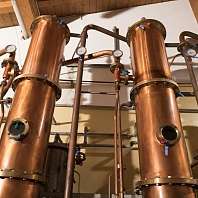
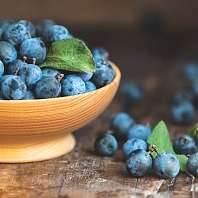
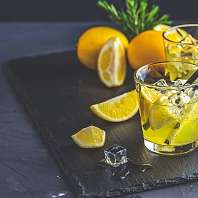
3 Questions for Gin Experts
How did gin get to be a tonic?
It is a classic - and as a gin and tonic one of the most popular long drinks. It owes its popularity to medicine. During the time of British colonialism in India, there was a liquid medicine that was fully trusted, especially as protection against the treacherous malaria: tonic water containing quinine. Quinine is extracted from the bark of the cinchona tree, which is native to South America, and was already regarded by the indigenous South Americans as a versatile medicine that could be used, for example, to combat chills and malaria fever. However, quinine tastes extremely bitter. To make the tonic water of the time drinkable, gin, which was particularly popular with the military, was added without further ado - the birth of gin and tonic.
What makes gin so aromatic?
Gin is a juniper spirit with an alcohol content of at least 37.5 percent. What makes the varieties so different in taste and aroma are the so-called botanicals. This is the name given to the herbs, spices and other plant-based ingredients that give each gin its individual flavour. In addition to juniper, botanicals can include citrus peel, ginger, cardamom, coriander, hibiscus flowers, lavender or Mediterranean herbs. As a rule, most gins are refined with six to ten botanicals. However, the trend is to use more and more flavourings. As a result, new varieties with exciting flavours are constantly being offered alongside the classic juniper-based varieties.
How is gin made?
Basically, a quality gin is distilled twice. Only if it has been distilled twice can it be called "distilled gin". The first distillation produces the basic distillate, which is only flavoured in a second distillation. The so-called neutral alcohol is usually distilled from grain. This neutral-tasting alcohol is now distilled a second time. In the process, the high-proof alcohol is diluted with water and heated in a so-called still. This produces alcoholic gases and water vapours that rise and are passed through the pipes of the still. Small sieves are suspended in this system, in which the respective botanicals are located. The vapour takes on the aromas of the spices and herbs. The volatile gases and vapours are then cooled down again in a condenser. They liquefy to form the finished distillate. After production, the gin must rest for a few days. It is then diluted with water, reduced to drinking strength and bottled - the basis for an aromatic gin and tonic.
Christoph Brandstätter
Host at the Romantik Seehotel Jägerwirt on the Austrian Turracher Höhe
Post your comment
Comments
No one has commented on this page yet.
RSS feed for comments on this page RSS feed for all comments
